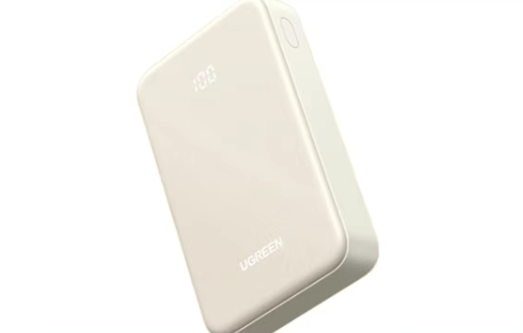How Much Power Does an 18650 Battery 3.7V 6000mAh Actually Store? Real-World Data Reveals the Truth

"How many times can an 18650 battery 3.7V 6000mAh power bank charge my phone?" "How much electricity does a 6000mAh tablet battery consume in a day?" These are common questions among tech users. A lot of people mistakenly believe that 1 milliamp-hour equals 1 kilowatt-hour, which leads to misunderstandings when buying devices and unnecessary battery anxiety.
In reality, milliamp-hours (mAh) and kilowatt-hours (kWh) are two completely different units. mAh measures capacity, while kWh measures energy consumption. Converting between them also requires factoring in voltage, efficiency, and usage scenarios.
This article explains exactly how much usable energy an 18650 battery 3.7V 6000mAh actually provides, based on both calculation and real-world testing—so you’ll never be misled by marketing claims again.
1. The Core Difference Between mAh and kWh
To figure out how many kilowatt-hours are in a 6000mAh cell, we first need to understand what these units mean.
- Milliamp-hour (mAh): A measure of capacity. A 6000mAh battery can, in theory, supply 1000 milliamps (1 amp) for 6 hours.
- Kilowatt-hour (kWh): A unit of energy, equal to a 1000-watt appliance running for 1 hour.
To convert mAh into kWh, we factor in voltage:
For example, an 18650 battery 3.7V 6000mAh (that’s 6Ah at 3.7V) has:
That’s only 0.0222 kilowatt-hours of energy. But since voltage drops during discharge and power banks often boost output to 5V, the usable energy is always a bit lower than this ideal value.
2. How Voltage Affects Energy
Different devices run at different voltages, which changes how much energy the same 6000mAh rating delivers.
- Phones/Tablets: Use 3.7V–4.4V cells. A 6000mAh cell stores about 0.0222–0.0264 kWh.
- Laptops: Many use 11.1V packs (3 cells in series). A 6000mAh battery at 11.1V equals 0.0666 kWh, nearly triple the phone battery’s energy.
- Power Banks: Contain 3.7V cells but output 5V USB. Boosting wastes 20–30%. A “6000mAh” power bank realistically delivers about 3100mAh at 5V, or 0.0155 kWh.
Clearly, two batteries both labeled “6000mAh” can differ drastically in usable energy depending on their voltage and configuration.
3. Real-World Losses
Theoretical numbers don’t tell the whole story. In real use, energy losses occur:
- Self-discharge: Lithium-ion cells lose 2–5% per month, even when idle.
- Conversion loss: Charging circuits and voltage regulators waste 10–20% as heat.
- Different power needs: A 6000mAh phone battery and a 6000mAh Bluetooth speaker will last very different amounts of time depending on power draw.
Example:
- A smartphone with a 3.7V 6000mAh battery consumes about 0.025 kWh for a full charge cycle (vs. 0.0222 theoretical).
- A 6000mAh power bank charging that same phone delivers ~5500mAh at 5V, or 0.0275 kWh.
4. How to Calculate the Energy of an 18650 Battery 3.7V 6000mAh
Step-by-step method:
- Check voltage – printed on the cell or spec sheet.
- Convert capacity – 6000mAh = 6Ah.
- Apply formula – kWh = Voltage × Ah ÷ 1000.
- Factor efficiency – multiply by 0.7–0.9 for real-world results.
Examples:
- Phone battery (3.7V, 6000mAh):
3.7 × 6 ÷ 1000 = 0.0222 kWh (theory). Real-world: 0.025–0.03 kWh. - Power bank (based on 3.7V 6000mAh, outputs 5V):
Effective = 3.7/5 × 6000 × 0.8 ≈ 3550mAh.
Energy = 5 × 3.55 ÷ 1000 = 0.0178 kWh.
5. Why Knowing the True Energy Matters
- Buying devices: Don’t be fooled by “6000mAh” alone—always check voltage and rated capacity.
- Electricity cost: Fully charging a 6000mAh phone battery costs less than half a cent in the U.S.
- Battery life estimates: If your tablet consumes 10W, an 18650 battery 3.7V 6000mAh gives ~2.2 hours of runtime in theory, closer to 1.8–2 hours in practice.
Final Takeaways
- mAh ≠ kWh — voltage and efficiency must be factored in.
- Rated capacity > advertised capacity — power banks based on an 18650 battery 3.7V 6000mAh may deliver much less than expected.
- Battery management matters — keep charge at ~50% during storage and reduce screen brightness to extend life.
So the next time someone claims “6000mAh = 6 kilowatt-hours”, you’ll know that’s pure marketing hype.

